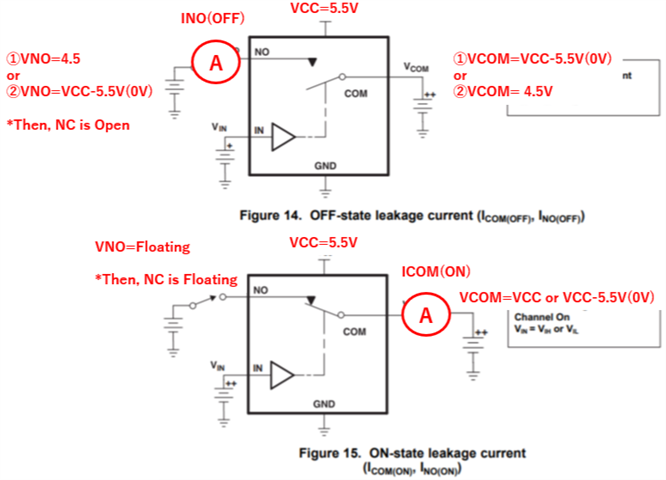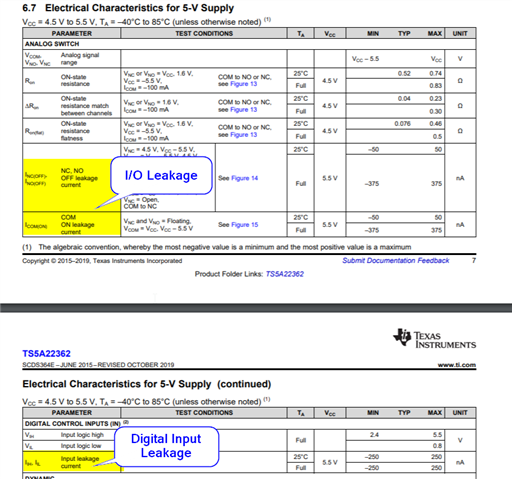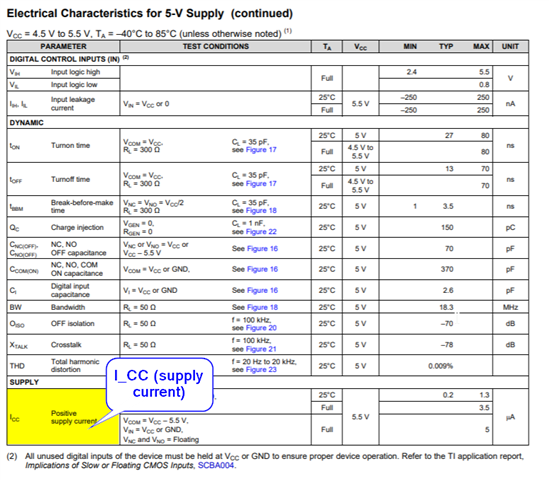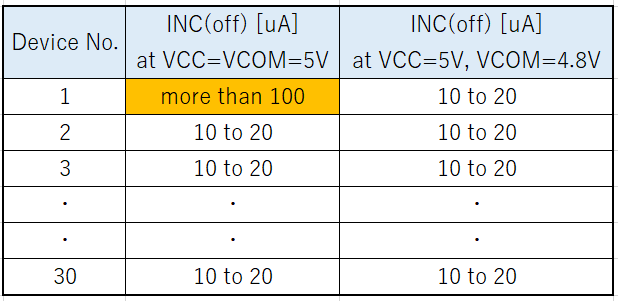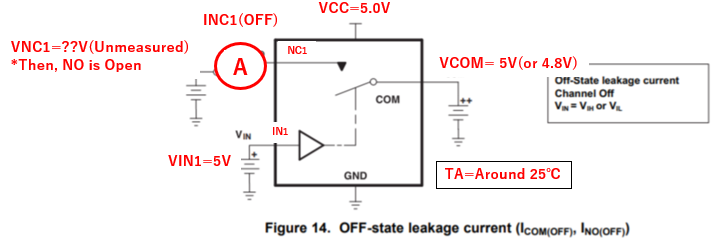Other Parts Discussed in Thread: STRIKE
Hi Team,
We would like to know detail measurement circuit of ON/OFF leakage current.
I understand it is the circuit below.
Is my understanding correct?
If no, could you please let us know correct measurement circuit?
[My image]

Regards,
Hide


